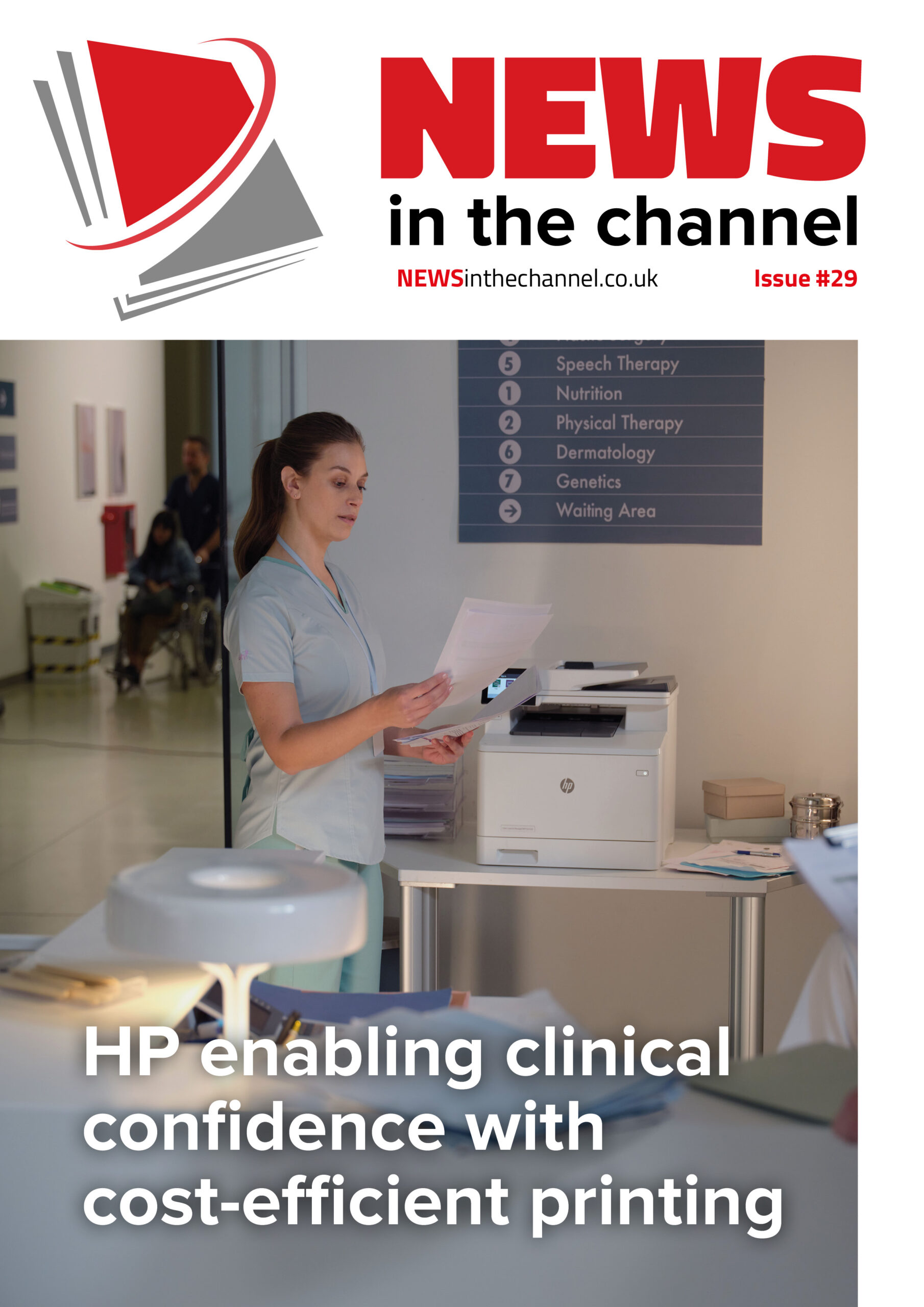With sustainability – and cost saving – remaining high on many business’ agendas, some
are looking to the energy efficiency of their computer fleet and there are savings to be found, but it isn’t just about the power the device uses.
With sustainability targets an integral part of many businesses today, finding ways to be more energy efficient are an important part of achieving these goals. With computers an essential part of businesses, they inevitably form part of the conversation.
Mary Jacques, executive director, global ESG and regulatory compliance at Lenovo, says that energy efficiency is a very important consideration when it comes to hitting sustainability targets. “Data centres already account for up to 1.5% of global energy use, according to the International Energy Agency, and switching to more energy efficient products helps an organisation to lower its CO2 emissions,” she says.
Mike Barron, managing director at SYNAXON UK, adds: “We’ve certainly seen strong demand for new laptops over the last quarter through SYNAXON Hub and we’ve seen a lot more interest in devices that offer an extended battery life,” he says. “I think energy efficiency is one factor for decision-makers, and where a customer has a significant number of devices, it may have some impact on overall consumption.”
However, Sebastien Vibert, engagement director and sustainable workplace lead at Atos, notes that this part of the industry is immature. “Energy efficiency cannot be a big consideration when we lack the capability to measure the energy output of a computer in real time universally,” he says.
That said, there is an increasing focus on energy efficiency among customers and manufacturers are responding to this change in demand. Mary says that manufacturers are working together to improve the energy efficiency of products. “At Lenovo we work closely with other original equipment manufacturers and industry stakeholder work groups to develop standards for more energy efficient products in line with proposed global IT product energy efficiency policies and other regulations,” she says. “We strive to continually improve the energy efficiency of our products.”
Increasing sustainability
But while energy efficiency is a factor in buying decisions, there are other ways to be sustainable when dealing with a computer fleet.
Sebastien says that as part of its Sustainable Workplace Research, Atos analysed 28.5 million devices used by medium to large organisations, with the help of partners Nexthink, Tier1 and Circular Computing, to offer recommendations for boosting IT sustainability.
“Our analysis reveals that across ICT estates, devices are upgraded and replaced in a way that is unsustainable,” he says. “For example, findings show that older devices are comparable to new in terms of energy efficiency, so there is no need to replace current devices on that basis alone without further investigation.
“Based on data, we see major opportunities to expand the use of remanufactured devices, which are greener, cheaper and comparable in quality and performance to new devices. For example, we found that 76% of large organisations’ current laptop environment can be remanufactured. As 79% of a laptops carbon footprint is generated during manufacturing, this is an important consideration.”
Sophia Haywood-Atkinson, services director, UK, TD SYNNEX, agrees that while energy efficiency is a consideration for any businesses purchasing new IT equipment more buyers are looking for trade-in options. “TD SYNNEX has its own trade-in company called CMR, which is a specialist in take-back services for notebooks and mobile devices,” she says.
“We work closely with them to buy back notebooks and mobiles for recycling and re-use. Trade-ins are increasingly popular with customers of all sizes and we’re also starting to receive more enquiries about recycled or remanufactured laptops, and that’s an area of the market we see growing strongly over the next couple of years.”
Mary agrees that it is important to look at the wider picture. “Not just at how to improve energy efficiency but also how to reduce emissions,” she says. “This includes by considering the way products are shipped, the packaging and in how products are recycled or reused at end-of-life.
“Organisations should start with avoiding and reducing emission internally and across the value chain. For example, even with energy efficiency projects, facilities can avoid energy consumption by turning off unused equipment or reduce energy consumption by optimising heating or cooling systems. These energy efficiency projects can lead to avoiding or reducing emissions and reducing energy costs.”
What difference does it make?
Energy efficient computers can make a difference regarding sustainability for a business. However, the impact can depend on how the device is used. “Our Sustainable Workplace Research also found that only 40% of environment impacting settings can be reinforced with automated policies, so the impact of energy efficient computers predominantly depends on how employees use them,” says Sebastien.
“An energy efficient computer will not tackle behavioural issues such as use of multiple monitors – 48% of users use an external monitor – or not switching off the device at night, as 16% of devices run for over 23 hours a day.
“Another major issue that energy efficient laptops do not tackle is carbon intensity. The carbon intensity of the grid can vary by 2.3 times in the UK during the day, so choosing when to use the grid or the battery can have a huge impact on carbon footprint.”
Reseller conversations
When talking about energy efficient computers to customers, resellers should focus on certain aspects.
“Resellers should be highlighting that energy efficient computers can be an important factor in reducing energy use in the data centre and on-premise, but also that it’s important to work with vendors who consider the full life cycle of the product, from how it’s shipped to how it’s recycled,” says Mary. “Resellers should also highlight the key role of ‘as-a-service’ approaches in boosting sustainability by supporting circularity.”
Mike adds that resellers should be highlighting all the time- and energy-saving features of new hardware – and all the other advanced features that they come with.
“I think what users want from a laptop is going to evolve; in the future I think customers will be looking for a more extended lifecycle and to know that the product is made – as far as it’s possible – from recycled or reused components,” he says.
“Vendors are also placing more emphasis on reuse and refurbishment of devices, and I would expect to see announcements from some of the major players in this area over the next few months.”
Future
Demand for energy efficient computers is likely to grow in the coming years as businesses continue to strive for energy savings and increasing sustainability.
Mary says that energy efficiency remains a core focus for Lenovo with the priority of focusing on the transition to renewable energy resources. “Lenovo has tripled its generation of solar energy since 2018, a result of its continued investments in renewable energy,” she says.
“As the world moves towards 2050, making measurable progress towards climate goals will increase in importance, so demand for energy-efficient computers and other products will continue to increase. In the data centre in particular, Goldman Sachs has predicted that artificial intelligence is going to drive an increase of 160% in energy demands across this decade, and energy efficient computers and in particular liquid-cooled servers will be key to mitigating this.”
While Sebastien agrees that energy efficient computers do contribute to lowering emissions, he says that two other factors are likely to have more of an impact on reducing a companies’ carbon footprint.
“The latest Atos data indicates that the most significant way organisations can make a difference to their carbon footprint is by refreshing IT equipment less frequently,” he says. “For instance, by doing nothing but adjusting the standard refresh cycle from three to four years, enterprises can gain a 25% reduction in related emissions without downgrading device performance or user experience.
“Secondly, it’s crucial for enterprises to focus on educating and engaging employees. By raising awareness and encouraging sustainable practices amongst staff, such as turning off devices when not in use, carbon emissions can be substantially reduced.”











